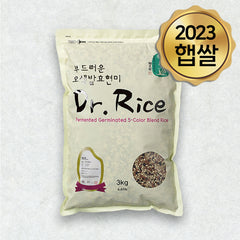Korean Food 101
Subscribe to Mill Blog to read interesting articles, helpful reviews, recommendations and more!
“One cannot think well, love well, sleep well,
if one has not dined well”Virginia Woolfe
The Land of Spice
New to Korean food? Don’t be intimidated, exploring Korean cuisine can be a delicious food journey of spice and bold flavors! What’s important to know is that Koreans have a true love and connection with food in their tradition, culture, and everyday life. Back in the day, Korea was considered a poor farming country with locals living off the land before Korea’s industrialization after WWII. Without modern refrigerators to rely on, Koreans mastered spicing, fermenting, and pickling local ingredients to preserve the little food they had. Over thousands of years, these techniques built the backbone for Korean cuisine, ranging over hundreds of different dishes, soups, stews, vegetables and side dishes (aka banchan).
Since meat was scarce, Koreans used their special techniques for mostly vegetables which evolved into Korean namul. Namul is a general term for a Korean seasoned vegetable dish. The name of the dish may vary slightly depending on what vegetables are used and how they are prepared, but they are still types of namul.
Koreans use a variety of spicy, savory, nutty, earthy, sweet, and many more flavors in their cooking process and final presentation. The classic Korean spice comes from high-quality Korean chili pepper paste (gochujang) and chili pepper flakes (gochugaru) while the more savory Korean soybean paste (daenjang) adds another unique layer of intense flavors to Korean cuisine. The base for many Korean stir-fry and other dishes come from the nutty, roasted flavor of sesame oil and classic saltiness of soy sauce. Add plenty of garlic, green onion, ginger, and other intensely bold flavors and you’ll have all you’ll need for a full Korean spread!

Kimchi to the Mainstream
The world knows Korea for the creation of kimchi, perhaps the most cherished Korean achievement. This spicy fermented cabbage also comes in countless different varieties created throughout Korean history. Without kimchi, Koreans cannot live. Kimchi naturally ripens in flavor as it ferments, with each stage featuring a different, unique flavor for the particular kimchi batch. Depending on the stage of ripening, kimchi can be used as meat marinades and cooked into fried rice, noodles, soups and stews. Although every family has a different take on how they make their kimchi, it’s undeniable that Koreans are truly lost without kimchi ready at hand!
Secret to Soup
Since Korea is a peninsula off the East Asian coast, many traditional Korean dishes revolve around seafood. While Korean seafood is becoming more and more well-known, a little known secret from the sea is responsible for the delicious collections of Korean soups and stews. All Korean cooks know that the secret to Korean soups is in the anchovies caught off the Korean coastline. These little anchovies called “nippori” make a huge impact on the final flavor of Korean stews, soups, and noodle dishes. The right anchovies can make the difference between a delicious Korean classic and a flat soup. Now that you know the secret, you can make these amazing traditional Korean recipes right at home! Whether you’re Korean who misses home-cooked food or someone stepping out of their comfort zone to try out new flavors and recipes, Korean food has a special relationship with everyone willing to try it!


Add a comment